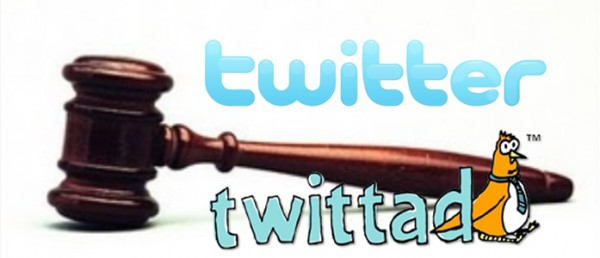 The year 2011 saw several interesting brand disputes come and go. From Twitter protecting its “Tweet” trademark to Christian Louboutin potentially losing its bid to prevent other designers from creating red-soled shoes, these cases provided several important bits of insight for business owners and entrepreneurs.
The year 2011 saw several interesting brand disputes come and go. From Twitter protecting its “Tweet” trademark to Christian Louboutin potentially losing its bid to prevent other designers from creating red-soled shoes, these cases provided several important bits of insight for business owners and entrepreneurs.
1. Twitter vs. Twittad
In October 2011, Twitter made headlines for settling its long-standing dispute with Twittad and finally putting itself in line to protect “Tweet” as a federally registered trademark.
Although Twitter was launched back in 2006, it did not seek trademark protection for “Tweet” until 2009. By that time, several other companies had already applied for registration of various trademarks either constituting or incorporating the word “Tweet” for use in connection with online sharing and marketing services. While Twitter and the USPTO waded through the multitude of applications, one particular trademark, “Let Your Ad Meet Tweets,” owned by Twittad, rose to the top. Twittad’s registered mark prevented Twitter from obtaining registration for “Tweet”, because the USPTO held that the marks were too “confusingly similar” to both receive trademark protection.
After trying multiple avenues to protect its “Tweet” trademark, Twitter ended up entering into a settlement agreement with Twittad. Twittad transferred the “Let Your Ad Meet Tweets” trademark to Twitter, making way for Twitter to file its related “Tweet” trademark registration application.
2. RIM vs. BBX
When RIM chose “BBX” as the name of its new mobile operating system, it too faced problems as the result of pre-existing trademark rights. A software outfit out of New Mexico had previously obtained registered trademark rights in “BBX” for its BASIC language interpreter, and a federal court held that this use of BBX prevented RIM from also using the initials as the brand for its new operating system.
Unlike Twitter, RIM ultimately chose to use a different trademark, settling on BlackBerry 10.
3. Lady Gaga vs. LadyGaga.org, et. al
Lady Gaga made headlines a few times in 2011 for her trademark enforcement efforts. In September 2011, she sought to claim ladygaga.org through a UDRP action (a domain name-specific dispute resolution proceeding designed to protect trademark owners from cybersquatting), but lost the bid because the website’s owner was using it as a pure fan site, and not for commercial or competitive purposes.
That same month, the pop star filed a lawsuit to stop Chicago-based Excite Worldwide from using her name to sell perfume and jewelry without her consent. This came after her attempt in March to shut down the Baby Gaga ice cream brand.
4. Chick-fil-A vs. Eat More Kale
When a Vermont-based artist sought to protect “Eat More Kale” as a federally registered trademark, Chick-fil-A took notice, and then took action.
Concerned about the value and exclusivity of its famous “Eat Mor Chickin” slogan, the fast food franchise accused the artist of trademark infringement, and began proceedings to protect the value of its brand. The dispute continues to play out, as the artist gains public support for his cause. For Chick-fil-A’s part, its legal maneuvering appears to be based in sound judgment to protect the value of its multi-million-dollar intellectual property assets.
5. Louboutin vs. Yves Saint Laurent
Finally, in a very interesting case with several important implications, a federal judge in New York ruled that Christian Louboutin was “unlikely” to be able to prevent other designers from using red soles on their shoes. This ruling was made despite the fact that Louboutin had obtained a federal trademark registration back in 2008. Describing the red coloring as serving “ornamental and aesthetic functions,” and focusing on the realities of the fashion industry, the judge put the validity of Louboutin’s federal trademark registration in jeopardy. Expect more developments in 2012.
As these cases all demonstrate, trademark protection is serious business for brand owners, and entrepreneurs and small business owners need to take care to (i) avoid infringing third-party rights, and (ii) protect their own intellectual property assets. By taking the necessary steps, business owners can both limit their exposure to potential liability and build value in the business for when it comes time to sell.
Jeff Fabian helps business owners protect their brands so that they can stay focused on running their businesses. Jeff is also a co-founder of TrademarkIntel, LLC, developer of an innovative software application for conducting instant, cost-effective trademark clearance and monitoring research. You can follow Jeff on Twitter @jsfabian.
This article is provided for informational purposes only, and does not constitute legal advice.




